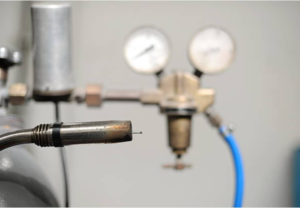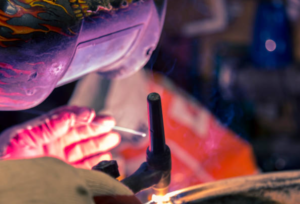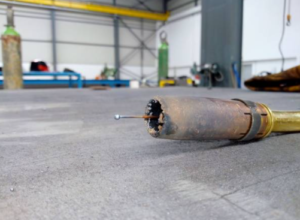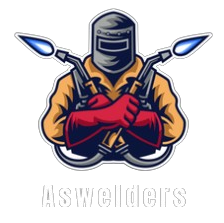The Intro
Argon-torch Welding is changing the meaning of welding and cutting processes. You will get a better finish in whatever job you do if you understand your argon torch with power and precision. This guide, therefore, will shed light on the smaller secrets of the argon torch and present you with techniques and tricks that will ensure you excel in welding and cutting jobs. With this guide, you will learn the science behind your torch and the advanced applications that will have you well on your way to becoming an expert.
What is an Argon Torch?
A welding instrument named the argon torch safeguards the welding area with argon gas because this unreactive gas stops contamination during welding or cutting processes. During welding, the shielding function of argon gas protects molten metal from contact with air-derived elements that could produce weak, unpredictable outcomes.
Tungsten Inert Gas welding utilizes the argon torch to create TIG welding processes through the use of non-consumable tungsten electrodes that produce an arc for base material fusion. Desired clean welds emerge from the protected molten metal through the application of contaminant-blocking inert gas (argon).
The functionality of argon torches extends beyond TIG welding since they serve in plasma cutting operations for precision cutting needs to provide metalworking industries with versatile capabilities.

Argon Torch Welding Basics
Before delving into some of the arcane tricks, you should know the basic foundation of argon torch welding. Here is an overview:
Argon Torch System Components
Typically, an argon torch system will consist of the following components:
The Torch Handle: This is the chief element you would be holding while welding.
The Electrodes: Tungsten rods through which the arc is generated by conducting electrical current.
Gas Supply: Regulators and hose, which convey argon gas to the torch.
Nozzle: The component of the torch where gas and arc unite to form the welding shield.
How does an Argon Torch work?
When operating with the argon torch, the electric arc activates between a tungsten electrode and the workpiece material. An arc produced heat enables argon gas to cleanse and shield the working area from contamination. The welder controls the heating process using the argon torch, which protects weld metals from breaking down while it melts.
Advanced Secrets for Getting Perfect Welds
The next step in your knowledge involves learning complicated techniques that yield outstanding outcomes within limited time periods.
First and foremost, choose an appropriate tungsten electrode.
The type and the size of your tungsten electrode are very important for the quality of the weld. For example:
- Pure Tungsten Electrodes are ideal for welding thin materials.
- Throated Tungsten Electrodes do great work in welding thicker materials, providing better arc stability.
The right electrode selection will ensure that you have a consistent arc and a good, smooth welding process.
#2: Make Your Torch Angle Perfect
Torch angle, heat distribution in the weld, and bead shape are all affected by the torch angle. A typical angle for TIG (Tungsten Inert Gas) welding with an argon torch is 15 to 20 degrees from vertical. Correct holding torch angle is necessary in obtaining a continuous and clean weld bead and minimizing spatter.

#3: Monitor the Heat Input
Too much heat will distort; too little heat will create a weak weld. The key is to balance the heat input. Always watch the amperage settings of your machine and adjust them based on material thickness. Practicing on different applications will help you get used to finding the right heat settings.
#4: Perform Cleaning on the Work Area
The highest secret to achieving perfect welding success lies in maintaining complete cleanliness. All workpieces should be completely free of oils as well as rust and dirt together with any other foreign material. Trivial amounts of contamination will negatively impact the weld quality. Welding begins after cleaning the surface points with either a wire brush or a solvent.
The following are the common mistakes that are to be avoided
Common errors exist for any argon torch-wielder, and common traps aplenty demand being avoided for perfection.
#1: Wrong Gas Flow Rate
Having the gas flow set too high or too low would interfere with shielding, with the consequent defects in the weld. Somewhere between 15 and 20 cubic feet per hour (CFH) is the best gas flow rate for the majority of applications; this would vary with the nozzle size and welding material concerned.
#2: Not Preheating the Material
When thick materials are welded, and in the case of metals, particularly aluminum, if preheating fails to happen, that would imply bad penetration and the possibility of cracking. Preheating ensures good fusion with reduced chances of defects.
Argon Torch Advantage
Wielding an argon torch comes with a few advantages that tend to make it the perfect instrument for precision welding and cutting applications:
- The use of inert argon gas enables welds to maintain pure forms since it blocks oxidation and protects against external impurities, making welds both clean and smooth.
- Molten metal achieves uniform heating through the excellent arc stability and heat control enabled by argon gas’s protective nature.
- Precision: the controlled heat distribution, as well as focused arc, allows for precision welding and cutting, which is essential for fine work such as aerospace or automotive manufacturing.
- Material Versatility: Argon Torch Wide Area Compatible: all types of metals, including stainless steel, aluminum, and titanium, are compatible with argon torches and thus make them versatile in usage in different industries.
- Reduced Spattering since the welding area is contaminated and least spattered, thus leading to a cleaner workspace with far less cleanup time.
Tips to Master the Argon Torch at Work for Flawless Results
While the good argon torch is worth its weight in gold, the torch needs great skill to master. Below are the effective ways to ensure you achieve studio results in your welding and cutting:
#1: Selection of the Correct Tungsten Electrode
The type and size of your tungsten electrode directly affect the arc’s stability and your work process. Choosing correctly ensures that the electrode performs well when welding or cutting different materials and for different processes:
- Pure Tungsten Electrodes: Fine for welding very thin things, and provide good stability in arcs with aluminum and magnesium.
- Thoriated Tungsten Electrodes: These are more appropriate for thicker materials and improve arc starting; also, their longevity is remarkable. Suitable for stainless steel and other ferrous metals.
- Ceriated Tungsten Electrodes are very much a recommendation for general welding tasks and are particularly good in the field of TIG.
The right size and type of electrode will tend to give a smooth operation and give repeatable results.
#2: Adjusting the Gas Flow Rate Properly
Mainly, this is very important to keep proper shielding of the welding technique. In little gas, oxidation occurs, and in high gas, turbulence causes arc stability to be blown off.
The required gas flow rate for most applications stands between 15-20 CFH. The proper flow rate should be selected based on the nozzle dimensions, along with considerations for the welding material and environmental conditions, which include wind speed.
#3: Hold Down the Right Torch Angle
The quality of the weld is greatly influenced by the torch angle. The most common torch angle used in TIG welding is anywhere between 15 to up to 20 degrees from vertical. This is maintained to achieve an even more stable arc and elicits an even and stronger welding bead.
While cutting, always maintain the right torch angle to achieve smooth, exact cuts without warping the material.
#4: Control the Heat Input
Too much heat results in distortion, whereas too little heat results in a weak weld or no weld at all. Welding is, therefore, almost a balancing act in which heat is kept and material thickness is considered.
- Amperage must be adjusted according to the thickness of the material.
- Pulse weld for better heat control on thinner materials.
- Preheating of thicker materials is to be practiced, as applicable, for the prevention of cracking.

#5: You Must Keep Your Work Area Clean
Your weld becomes much weaker with any contaminating particles, and suddenly your work looks shabby as well. Ensure that you clean rusty, oily, dirty, and other contaminants from surfaces that are to be welded. Use a wire brush or chemical-cleaning agent to prepare workpiece surfaces for welding. This is crucially very important with metals such as stainless steel and aluminum.
Troubleshooting Common Argon Torch Problems
The argon torches produce difficulties for welders regardless of their expertise level. People who use argon torches must deal with these typical problems, together with these solutions:
#1: Poor Arc Stability
Several issues, like incorrect gas flow together with improper tungsten electrode size as well and improper torch angle, can lead to poor arc stability. Check your device settings along with the electrode sharpness and cleanliness.
#2: Inconsistent Gas Flow
Inspect the gas supply system through the regulator and hoses because erratic gas flow might be caused by leaks or clogs. Verify that both the cylinder is full and the gas maintains uniform distribution through the lines.
#3: Excessive Spatter
A problem with spatter occurs from using inappropriate amperage settings or maintaining an incorrect arc length. Proper heat control and precise electrode-workpiece distance should be maintained by adjusting the machine settings.
Conclusion
Any person engaged in welding or metal cutting must learn the essential competency of operating an argon torch. The argon torch provides unsurpassed accuracy coupled with easy control and exceptional cleanliness when used on thin aluminum sheets and thick steel. Knowledge of torch operations, combined with component selection and proper techniques, allows welders to obtain perfect outcomes on every job.
The discourse in this article leads you toward exploiting the totality of an argon torch’s capability. Continuous practice with patience will eventually develop your ability to execute welding or cutting jobs with complete confidence and skill. Happy welding.

